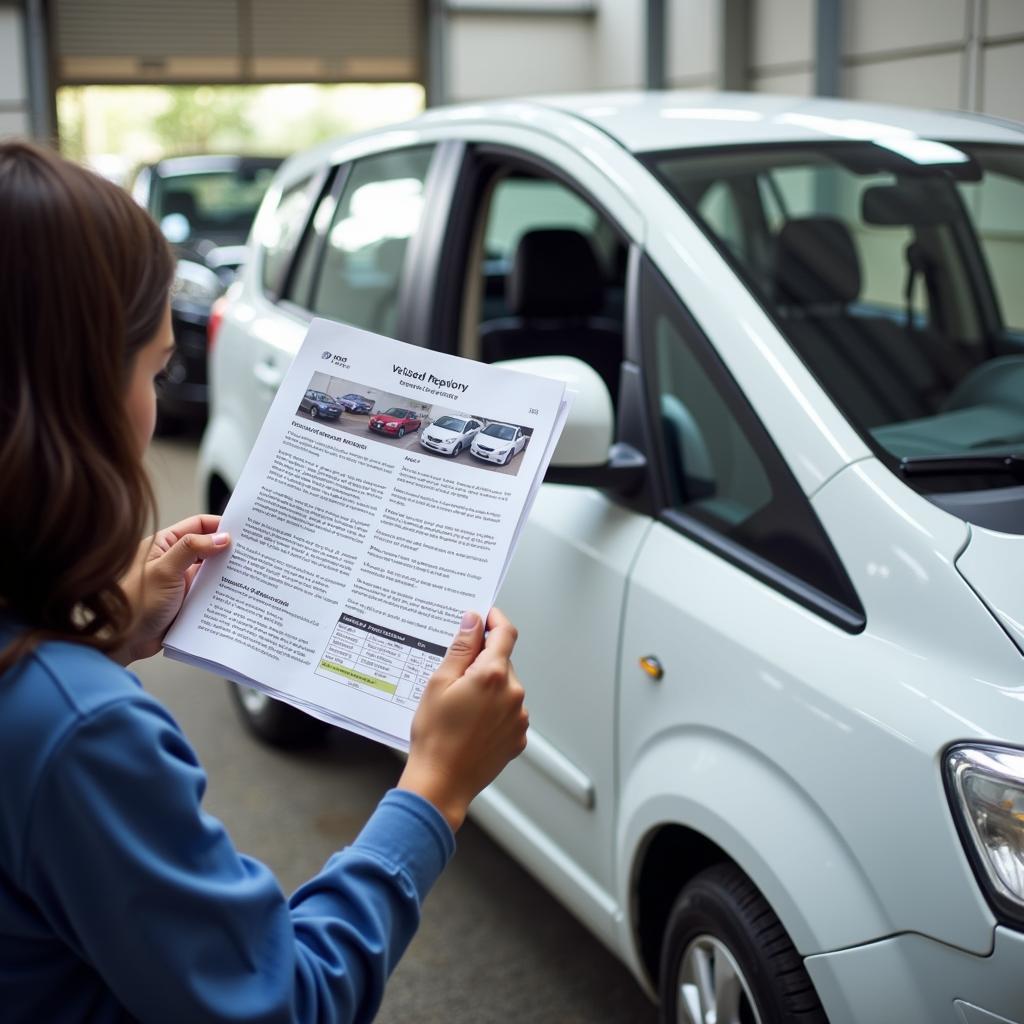Buying a used car can be a great way to save money, but it’s essential to be aware of potential problems that can arise within the first 30 days. These issues can range from minor annoyances to major mechanical failures. Understanding common used car problems in the first 30 days and knowing how to address them can save you time, money, and frustration. This guide will help you navigate this crucial period after your purchase.
Similar to instances of car title check problems reported, uncovering hidden issues within the initial period is crucial. One of the most frequent used car problems within the first 30 days is discovering undisclosed mechanical issues. These can include anything from faulty brakes to transmission problems. It’s crucial to have any used car thoroughly inspected by a qualified mechanic before purchase. This pre-purchase inspection can identify potential problems and give you leverage for negotiating the price or walking away from a bad deal.
What are the most common used car problems within the first 30 days?
Common used car problems that can surface within the first 30 days include issues with the brakes, tires, engine, transmission, electrical system, and other components. Some problems might be immediately noticeable, while others might develop gradually.
- Brakes: Squealing, grinding, or a soft brake pedal can indicate worn brake pads or rotors.
- Tires: Uneven wear, vibrations, or low tire pressure can signal alignment issues or worn tires.
- Engine: Strange noises, rough idling, or decreased performance may indicate engine problems.
- Transmission: Difficulty shifting gears, slipping, or unusual noises can be signs of transmission trouble.
- Electrical system: Malfunctioning lights, windows, or the radio could indicate electrical problems.
 Common Used Car Issues within the First 30 Days
Common Used Car Issues within the First 30 Days
How can I protect myself from used car problems within the first 30 days?
Protecting yourself from used car problems in the first 30 days involves thorough research and inspection. Don’t rush the buying process. Take the time to research the car’s history, get a pre-purchase inspection, and understand any warranties or guarantees offered. This proactive approach can help avoid costly repairs and headaches down the road. If you are considering selling your current car with issues, understanding the process is crucial. Resources like sell my car with transmission problems can provide valuable guidance.
What should I do if I experience used car problems within the first 30 days?
If you encounter issues within the first 30 days, document everything. Keep records of any repair attempts, communication with the seller, and receipts for parts and labor. This documentation will be invaluable if you need to pursue legal action or request a refund.
- Contact the seller: If you bought the car from a dealer, contact them immediately to report the problem.
- Review the warranty: Check the terms of any warranty or guarantee to understand your rights and the seller’s obligations.
- Consult a mechanic: Get a second opinion from a qualified mechanic to confirm the diagnosis and estimate the repair costs.
- Consider legal advice: If you are unable to resolve the issue with the seller, consult with an attorney or consumer protection agency.
State laws regarding used car sales vary. For example, understanding the specific regulations in places like Florida or Virginia is essential. You can find more information on resources like used car problems within 30 days florida orlando and used car problems within 30 days virginia.
 Used Car Inspection Checklist
Used Car Inspection Checklist
Are there specific considerations when buying a used car in the UK?
Buying a used car in the UK has its own set of considerations. Familiarize yourself with UK consumer protection laws and your rights if you purchase a faulty vehicle. Resources such as bought used car from dealer with problems uk can be beneficial in understanding the specific regulations and procedures in the UK.
What are some tips for avoiding used car problems?
- Thorough Inspection: Always have a qualified mechanic inspect a used car before purchase.
- Vehicle History Report: Obtain a vehicle history report to check for accidents, title issues, and service records.
- Test Drive: Take the car for a thorough test drive in various conditions, including city streets and highways.
- Negotiate: Don’t be afraid to negotiate the price based on any necessary repairs or identified issues.
 Tips for Avoiding Used Car Problems
Tips for Avoiding Used Car Problems
“A pre-purchase inspection is the best investment you can make when buying a used car,” says John Smith, Senior Automotive Technician at Auto Experts. “It can save you thousands of dollars in the long run.”
“Don’t rely solely on the seller’s assurances,” adds Jane Doe, Lead Mechanic at Reliable Auto Repair. “Get an independent assessment to ensure the car is in good condition.”
In conclusion, being aware of potential used car problems within the first 30 days from purchase is crucial. By taking preventative measures, conducting thorough research, and understanding your rights, you can significantly reduce the risk of encountering costly and frustrating issues. Remember, a pre-purchase inspection and a vehicle history report are essential steps in protecting your investment.
For further assistance or personalized advice, connect with the experts at AutoTipPro. Contact us at +1 (641) 206-8880 or visit our office at 500 N St Mary’s St, San Antonio, TX 78205, United States.






Leave a Reply